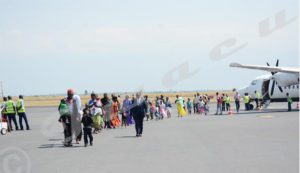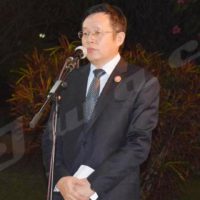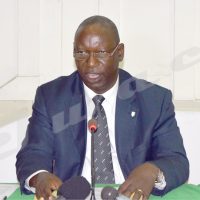At least 48 Burundians (30 children and 18 adults) from ten households who were refugees in Kenya have arrived at Bujumbura International Airport this Wednesday 4 July. They came from Kakuma refugee camp. Some of them had fled the country in 2000 others in 2015. All of them are from Kirundo, Bugabira, Busoni and Bwambarangwe communes of Kirundo northern province.

Burundian returnees from Kenya at Bujumbura International Airport
Félicien Bahati, one of the returnees, says he is happy to come back home after he fled the country during the 2015 crisis. “I passed through Uganda before joining Kenya in 2015”, he says. He also says many other Burundian refugees wish to return. “We live in dire straits in the refugee camp,” he says.
Marie Barutwanayo, a mother of eight says she fled the country in 2000 due to famine and poverty. “It was not easy to feed my children without working,” she says.
Térence Ntahiraja, Assistant to the Minister of Home Affairs, says those Burundians are returning home thanks to the tripartite agreement signed on 28 March 2018. “The returnees will be taken to Kajaga transit center in Bujumbura Province before joining their native provinces,” he says. Mr Ntahiraja adds that they will first receive food and non-food assistance as well as an envelope of USD 60 per adult and USD 48 per kid.
187 Burundian refugees will be repatriated from Kenya until 25 July in four single flights every Wednesday.
Up to 3 July, about 35,322 people from 11,590 households from Burundi neighboring countries have already returned since September 2017.
According to UNHCR figures, 396,058 Burundian who fled the country in 2015 are covered by the Burundi Regional Refugee Response Plan as well as 37,000 Burundian asylum seekers prior to April 2015. In addition to this population, Kenya shelters 13,200 Burundian refugees, Mozambique has 4,800; Malawi has 3,600 and 2,500 in Zambia who are assisted within the respective country-level programs.



















 IWACU Open Data
IWACU Open Data

